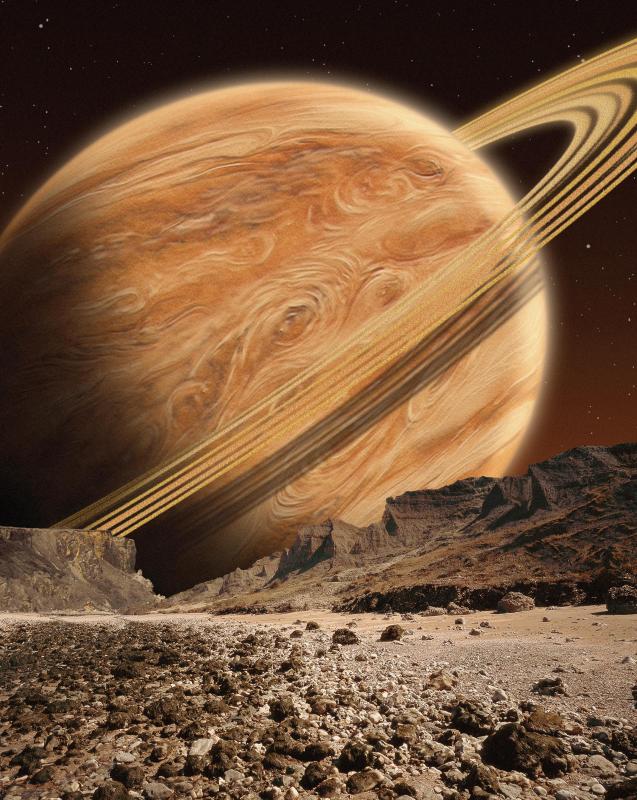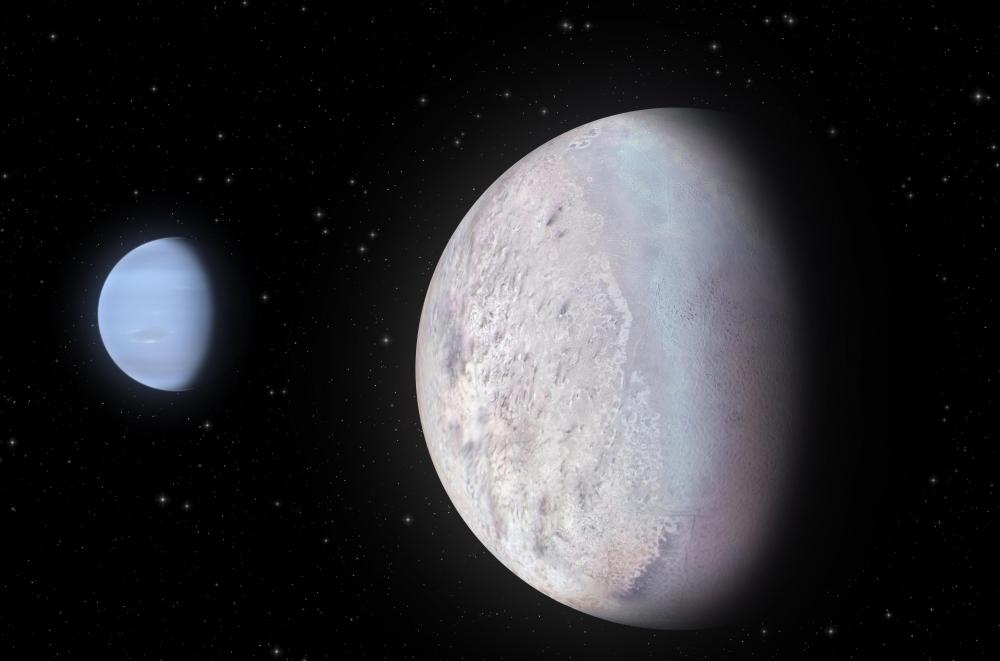At AllThingsNature, we're committed to delivering accurate, trustworthy information. Our expert-authored content is rigorously fact-checked and sourced from credible authorities. Discover how we uphold the highest standards in providing you with reliable knowledge.
What is a Cryovolcano?
A cryovolcano is an icy volcano found on icy bodies, especially moons, in the outer solar system. Cryovolcanoes have been observed directly on Neptune's moon Triton, during a Voyager II fly-by in 1989, and on Saturn's moon Enceladus, by the Cassini probe on 27 November 2005. Indirect evidence of cryovolcanism has been found on several other moons and bodies, including Europa, Titan, Ganymede, Miranda, and the trans-Neptunian object Quaoar.
Instead of erupting molten rock, as in a conventional volcano, cryovolcanoes erupt volatiles (low boiling point elements or compounds), like water, ammonia, carbon dioxide, nitrogen, or methane, accompanied by gas-driven solid fragments. This is called cryomagma. A cryovolcano produces plumes that may be a hundred or more degrees hotter than the frozen surface matter. Exposed to the cold and vacuum of space, the plumes quickly solidify, becoming airborne dust. As the gravity is weak on many ice moons, the plume may completely escape the moon's gravity well, go into an orbit, or crash back down on the surface in another area.

The source of energy of a cryovolcano usually comes from tidal friction, heat that builds up in the core of moons as they bend and distort in the gravity field of the massive gas giants they orbit. It is also suspected that some moons may have translucent layers of ice that permit light in to heat material beneath it, but have an insulating property that seals in heat and creates a greenhouse effect. This creates pressurized gases in the interior that will escape if there is a route to the surface, thus creating a cryovolcano.

Evidence of a cryovolcano was first uncovered on the south pole of Neptune's moon Triton, in the form of light streaks of nitrogen on the surface covering a dark, older crust. As the surface of some moons may be many hundreds of millions of years old, it can be easy to spot surface deposits that are relatively new, sometimes even just a few hours old. However, this does require direct examination by space probes doing fly-bys. These features are too small and distant to be seen by Earth-based telescopes or observatories.
Frequently Asked Questions
What is a cryovolcano and how does it differ from a traditional volcano?

A cryovolcano, or ice volcano, is a type of volcano that erupts volatiles such as water, ammonia, or methane, instead of molten rock. These substances can be in the form of vapor or liquid, which then freeze on the surface. Unlike traditional volcanoes, cryovolcanoes are found on icy moons and dwarf planets where temperatures are low enough for volatile compounds to solidify.
Where can cryovolcanoes be found in our solar system?
Cryovolcanoes have been observed or are suspected to exist on several moons and dwarf planets within our solar system, including Europa and Enceladus (moons of Jupiter and Saturn, respectively), Pluto, and Triton (Neptune's largest moon). These celestial bodies have subsurface oceans or layers of volatile materials that can fuel cryovolcanic activity.
What causes a cryovolcano to erupt?
Cryovolcanic eruptions are driven by the same principles as regular volcanic eruptions: pressure and heat. However, the heat on icy worlds often comes from tidal forces exerted by their parent planets, which can cause friction and melting within the moon's interior, leading to the buildup of pressure that eventually triggers an eruption of subsurface liquids or gases.
What materials are ejected during a cryovolcanic eruption?
During a cryovolcanic eruption, a mixture of substances can be expelled, including water, ammonia, methane, nitrogen, or a briny mix of water and salts. These materials are often in a liquid state when they erupt but quickly freeze upon contact with the extremely cold surface temperatures of their environment.
How do cryovolcanoes shape the surface of their host bodies?
Cryovolcanoes significantly impact the landscape of their host bodies by depositing fresh material onto the surface, which can form new terrain features such as plains, mountains, and even cryovolcanic domes. Over time, these eruptions can also resurface areas, covering old impact craters and leading to a younger, smoother appearance.
Can cryovolcanoes support life?
While cryovolcanoes themselves are not habitats, they indicate the presence of subsurface oceans that may harbor the conditions necessary for life. The heat and chemical reactions associated with cryovolcanism could provide energy sources for microbial life, making moons like Europa prime targets for astrobiological research in the quest to find extraterrestrial life.
AS FEATURED ON:
AS FEATURED ON:













Discuss this Article
Post your comments